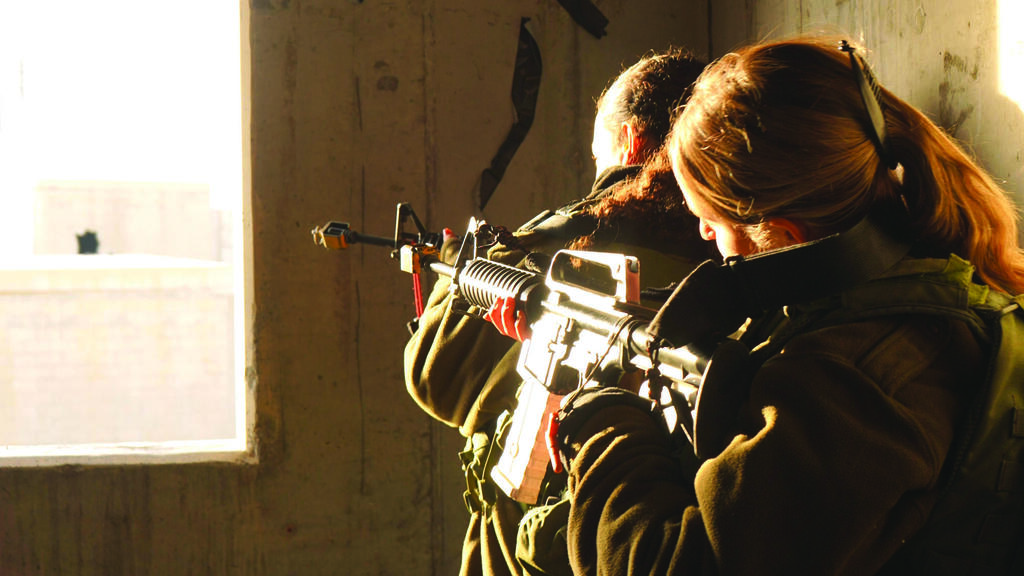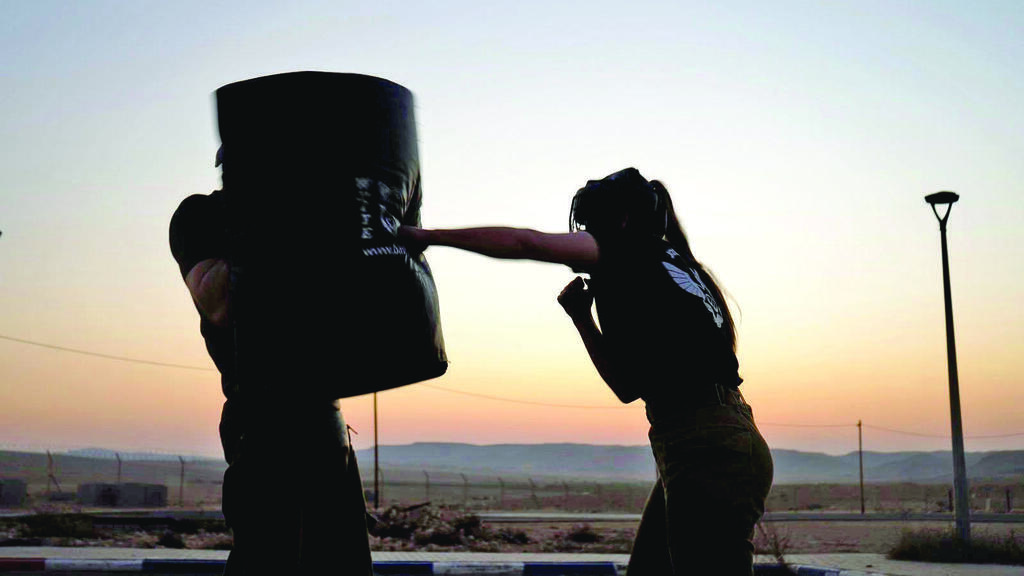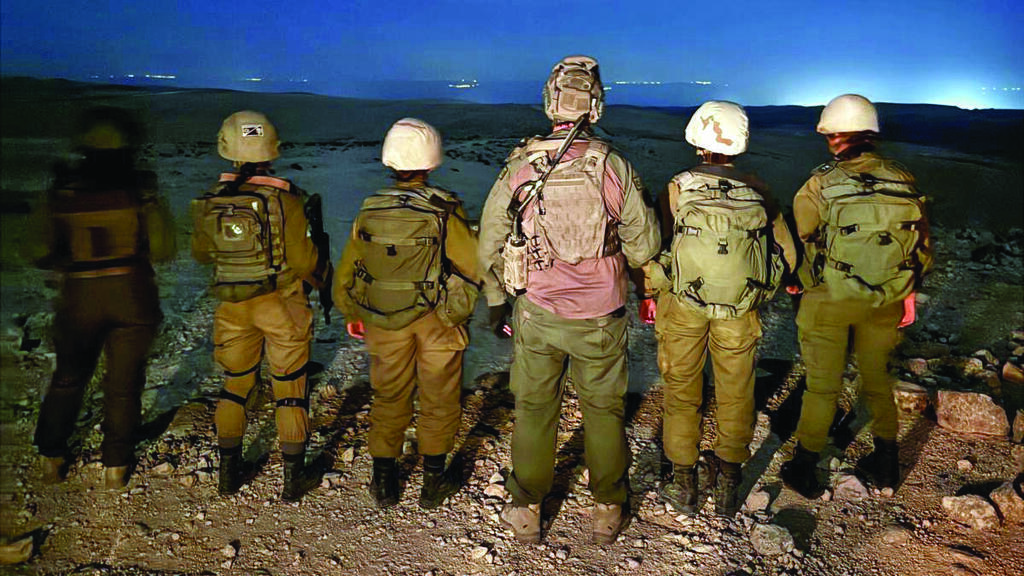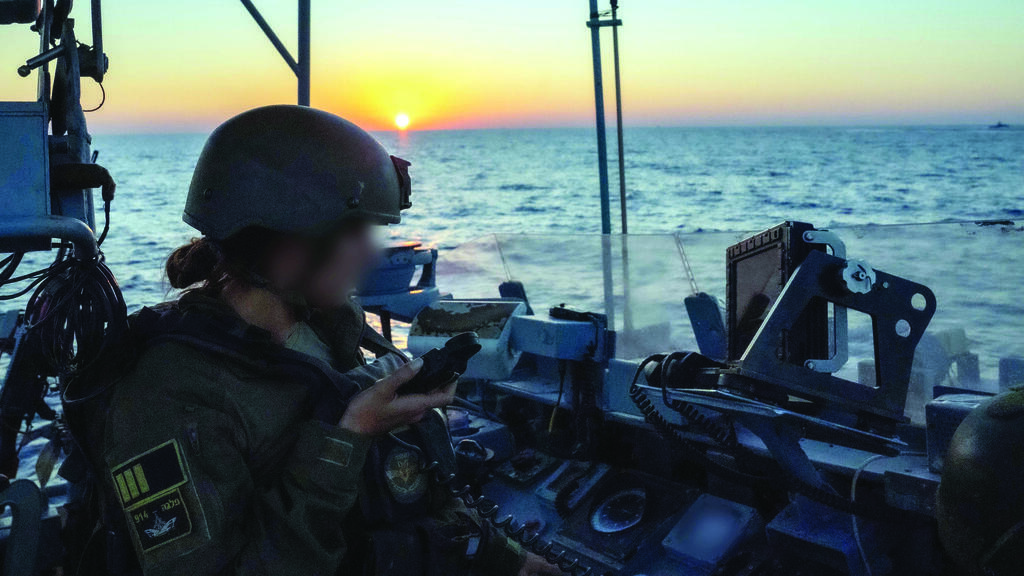Drone instructor
The war in Gaza brought drones to the forefront of combat, and drone instructors—a new role in the IDF—are now training soldiers to operate combat drones and use them in real time: for reconnaissance, threat detection and guiding forces on the ground. These small drones help save lives, spot terrorists and see what's around the corner without risking soldiers' lives.
The job requires both technical control of the drone and a solid grasp of ground combat: how troop movement looks, where best to position a drone and how to operate it during gunfire or an assault. Drone instructors go through a professional course at the Counterterrorism School and then head out to the field—training new recruits, reservists and combat units across the military.
It’s a position for girls with a technical mind, creative thinking, strong instructional skills and mental flexibility, since each unit uses drones a bit differently. The work involves long stints in the field, frequent travel and quick adaptation to constantly evolving systems. Instructors must be available, professional and capable of teaching both young soldiers and seasoned reservists with precision.
Krav Maga instructor
Soldiers in this role teach others how to respond in moments when their weapons aren’t within reach—at point-blank range, when immediate action is critical. They don’t just teach techniques; they drill instincts: how to respond to a sudden terrorist attack, disarm a knife, counter a kidnapping attempt or survive a hand-to-hand fight.
To qualify, candidates need the right medical profile, must pass a physical tryout and interview, and prior martial arts experience is a plus (though not mandatory). Training includes a short basic training phase followed by a roughly three-month course.
The course covers technical drills, workout planning, group instruction and handling high-pressure scenarios—facing surprise events, noise and darkness. Each trainee also gets hands-on experience instructing, with placements matched to future assignments.
After training, instructors are posted throughout the military—from basic training bases to combat units—and work to keep soldiers combat-ready with real-time response skills. The role demands mental resilience, assertiveness, physical fitness and leadership.
It also involves continuous learning—Krav Maga instructors constantly update their skills and look for new ways to improve combat methods. It’s a job for women who love movement, thrive in leadership and want a meaningful, high-adrenaline service.
Combat Hummer operator
A combat Hummer operator drives a specialized military vehicle—an armored Hummer used to simulate a tank or APC during field exercises that prepare soldiers and commanders for real combat. These drills take place across the country—in open terrain or urban areas, by day or night, rain or shine.
Get the Ynetnews app on your smartphone: Google Play: https://bit.ly/4eJ37pE | Apple App Store: https://bit.ly/3ZL7iNv
The position, open to women only, involves demanding driving conditions, operating vehicle systems and working closely with combat units. Exercises vary—from short drills to multi-day missions deep in the field. The daily routine includes travel, coordination, hands-on operation and lots of adaptability. Sometimes you’re with a familiar team, sometimes with a unit you’ve just met.
It’s a tough job with long hours, mostly at night. But for anyone who loves driving, desert landscapes and wants to be part of something meaningful, this is a worthy place. Training includes driving practice, technical skills and learning military protocols.
Electronic warfare operator
EW (electronic warfare) operators handle advanced systems designed to disrupt or defend the frequency spectrum used for military communication. In addition to offensive disruption of enemy systems, there's also a defensive side—known as CEW in the military (counter-electronic warfare)—that aims to prevent enemy interference.
In practice, EW operators carry out a wide range of missions: from jamming GPS signals, disabling drones and intervening in enemy broadcasts, to detecting and responding to electronic attacks in real time.
These soldiers serve in the IDF’s Cyber Defense Directorate. It’s a highly sophisticated unit that operates the military’s most advanced tools and plays a key role in nearly every sensitive operation, in coordination with air, naval and ground forces.
That was the case in the April 2024 incident, when Iran launched hundreds of missiles and UAVs toward Israel. EW operators were deployed in the field, activated systems in real time and contributed to life-saving interceptions—watching the explosions and interceptions unfold in the sky.
Red team simulators: modeling the enemy
Soldiers in this role serve in a unique unit that simulates enemy tactics, gear and combat methods in training exercises—so IDF units can prepare as realistically as possible. They study enemy weapon systems, combat doctrine and field behavior, including formations and ambush tactics.
Training includes theoretical and practical knowledge, physical training and field exercises. Once certified, the soldiers join a company that participates in simulations—sometimes acting as the opposing force, sometimes as a surprise element and sometimes within complex scenarios.
The role demands agility, improvisation and tactical thinking. You won’t always know what’s coming in a drill and must respond in real time. Soldiers use replica enemy gear—including specialized uniforms, fake weapons and other props—and are responsible for making every detail feel as authentic as possible.
It’s a demanding but deeply rewarding job. Many soldiers say they feel they’re directly improving combat readiness. Anyone looking for a meaningful, hands-on role that combines planning, mobility and mental flexibility will feel at home here.
Israeli Navy officer
A female officer in the Israeli Navy commands a combat crew aboard an IDF vessel—either a missile boat or a patrol boat. She’s responsible for operating weapons systems, navigation, electronics, engines and managing troops, making decisions and leading missions in open waters.
The course is one of the longest and most intensive in the military. Those who complete it graduate with an officer’s rank, a bachelor’s degree and the prestigious naval officer badge—one of the most sought-after in the IDF. But it’s not an easy path: fewer than half the candidates make it to the end.
Training includes academic studies, physical training and a significant amount of time at sea—during routine missions, exercises and operational voyages. Officers must function under isolation, stress, pressure and sleep deprivation. They’re expected to master complex systems, lead teams and adapt to constantly changing conditions.
This is no ordinary position. It demands exceptional skills—but it gives a lot back to those who are up for the challenge.
Parachuting instructor
If you've ever seen soldiers jump from a plane, there’s someone who made sure they not only packed their parachutes—but knew exactly what to do the moment they jumped. Parachuting instructors are responsible for preparing combat soldiers for their airborne moment: ground training, equipment briefings, safety procedures and mental readiness.
Instructors serve in one of three companies—automatic jumps, freefall and aerial resupply—each specializing in a different type of jump. They’re not only instructors but also deeply familiar with the technical side, gaining hands-on experience in challenging conditions.
It’s a job that calls for precision, responsibility, leadership and a love for the extreme. It suits those with a strong presence, a technical mindset, teaching skills and a desire for something off the beaten path. It’s an intense and demanding role—but also deeply fulfilling.





